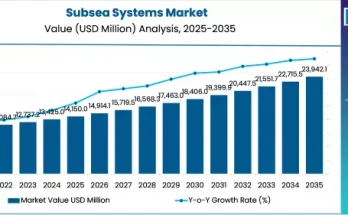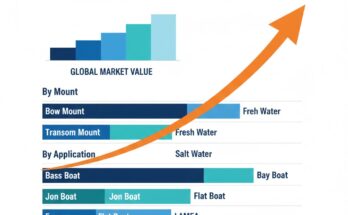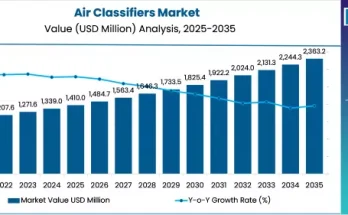The global mud gas separator market is poised for steady growth, with projections indicating a rise from USD 4,202 million in 2024 to an estimated USD 6,249 million by 2035. This growth trajectory represents a compound annual growth rate (CAGR) of 3.7% over the forecast period (2025 to 2035). The surge in offshore and onshore drilling activities, coupled with the rising demand for efficient gas handling systems in drilling rigs, is expected to be a key driver in this upward trend.
Mud gas separators, also known as poor boy degassers, play a critical role in primary gas removal during drilling operations. Their ability to safely separate gas from drilling fluids helps prevent dangerous blowouts and ensures safer, more efficient well control. As energy companies intensify efforts to tap into unconventional reserves, the demand for high-performance mud gas separators continues to grow.
Segmental Analysis: Type, Exploration, Orientation, and Region
The mud gas separator market is segmented based on type, exploration type, orientation, and geography. Among the types, open bottom separators remain dominant due to their high capacity and effective venting capabilities. However, closed bottom and float-type separators are witnessing increased interest for operations where a more compact or mobile system is required.
In terms of exploration type, offshore applications account for a significant share due to the complex and high-pressure environments encountered in subsea drilling operations. The need for enhanced well safety and better gas management in deep-sea projects underlines the importance of reliable separator systems. Onshore exploration, however, is not far behind, particularly in regions where shale gas extraction is surging.
The orientation of mud gas separators—horizontal and vertical—also plays a crucial role in operational preferences. Vertical separators are often used for compact spaces on offshore rigs, whereas horizontal types offer greater surface area for gas separation, suitable for land-based rigs with ample space.
Regionally, North America leads the global market, driven by a strong presence of oil & gas infrastructure, particularly in the U.S. shale basins. Asia-Pacific is emerging as a lucrative market, with countries like China, India, and Indonesia ramping up domestic oil and gas exploration to reduce import dependence. The Middle East & Africa, with their extensive reserves and ongoing E&P investments, are also projected to contribute significantly to the global market share.
Press Release: Recent Developments and Competitive Landscape
Crafting a Google News-Optimized Industry Update
The mud gas separator market is witnessing strategic moves from key industry players aiming to expand their market footprint through innovation, partnerships, and geographic expansion. Companies such as National Oilwell Varco, Schlumberger Limited, Halliburton Company, Weatherford International, and GN Solids Control remain pivotal in shaping market dynamics.
Recent years have seen significant product developments. For example, Halliburton has introduced new compact separators that enhance operational safety in high-pressure environments. Similarly, Schlumberger has focused on integrating digital monitoring into their separator systems, enabling real-time data analysis to improve gas control.
National Oilwell Varco continues to lead in delivering customized separator solutions tailored for both deepwater and onshore operations, while GN Solids Control has increased its presence in the Asia-Pacific region by establishing local service hubs to cater to regional demand more efficiently.
Competitor analysis shows a trend toward vertical integration and service bundling. Larger players are offering full drilling fluid systems, including mud gas separators as part of an integrated package. This approach not only enhances operational efficiency for end-users but also strengthens vendor-client relationships through comprehensive service offerings.
Key Market Drivers and Restraints
The key driver for the mud gas separator market is the rising number of deepwater and ultra-deepwater drilling projects. With the depletion of easily accessible reserves, oil and gas companies are venturing into more challenging terrains where safety and precision are paramount. This necessitates the deployment of high-performance gas handling equipment like mud gas separators.
Technological innovations in separator design—such as compact, skid-mounted units and automation-enabled systems—are further fueling market growth. These advancements reduce footprint, lower operational costs, and improve process reliability.
However, market growth is not without challenges. Environmental concerns and a global push for renewable energy may hinder long-term investments in fossil fuel infrastructure. Additionally, fluctuations in crude oil prices can impact drilling activity, indirectly affecting equipment demand.
Future Outlook: Strategic Focus and Opportunities
The future of the mud gas separator market lies in sustainable and efficient technologies. As the oil & gas industry faces increasing scrutiny over emissions and safety, equipment that minimizes environmental impact while maximizing safety will gain prominence.
Opportunities abound in emerging markets, where energy demand is rising and governments are investing in exploration. Moreover, retrofitting existing rigs with advanced separators presents a significant aftermarket revenue stream for manufacturers.
Check out More Related Studies Published by Fact.MR:
Mobile Conveyor Market
https://www.factmr.com/report/3941/mobile-conveyor-market
Planting Equipment Market
https://www.factmr.com/report/3954/planting-equipment-market
Rotary Gripper Module Market
https://www.factmr.com/report/4130/rotary-gripper-module-market
Cold Trap Market
https://www.factmr.com/report/4228/cold-trap-market



